17 Types of Cabinet Hinges to Suit Your Style & Decor
Author: Rick Worst | Editor: Omar Alonso
Review & Research: Jen Worst & Chris Miller
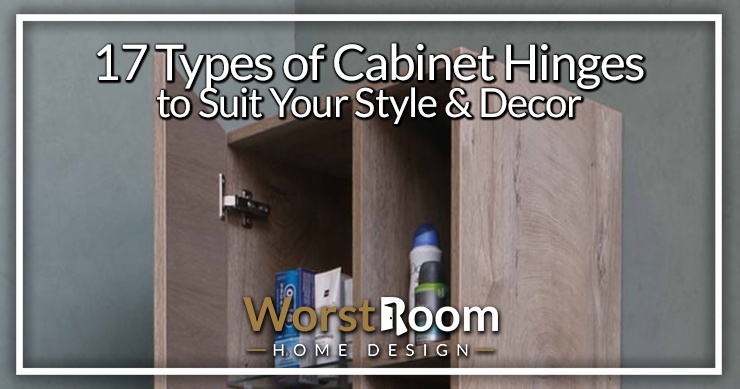
When it comes to building a dream home for yourself or your clients, even the tiniest details can serve a bigger purpose, such as the types of cabinet hinges.
There is no denying that the ample interior space and aesthetic-looking exterior are extremely important, but so are their hinges.
Cabinet hinges will affect the functionality and overall appearance of your doors a lot.
And while the endless options may overwhelm you at first, fortunately, the style and the features you are looking for can help narrow down the types of cabinet hinges you can choose from.
Don’t delay this, as all the hardware must be selected before you start working. Read on if you need some help deciding what option you should go for.
17 Types of Cabinet Hinges
There are abundant options of cabinet door hinge types available that differ in functions and looks, but these are the most popular ones you’ll come across. You're free to choose what you want if you're starting fresh, but if you're replacing hinges, consider using the same style (and even same manufacturer) again so there's no surprises.
European Hinges
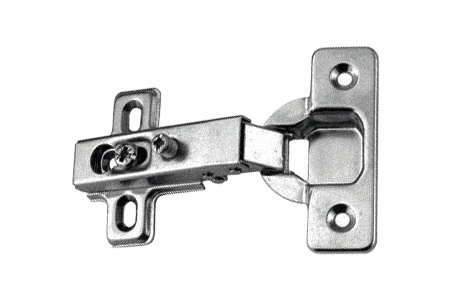
If you want your hinges concealed when you close the door, European hinges are a great choice.
They were initially designed to fit the seamless cabinets that look popular in Europe. They now come in multiple sizes that are compatible with inset, partial, and complete overlay doors.
Since they can support heavier doors and can support heavy-duty use, they are perfect to be used in the kitchen, in filing cabinet alternatives, in media centers, or wherever.
You might need two or three hinges for each door. There are two mounting plates attached through an arm, with one featuring a cup resting inside the hole bored and the other fixed to the inside of the face-frame.
These hinges are incredibly convenient. As they remain concealed, you can ease up on the cleaning a little as they barely collect any dust, dirt, moisture, or grease. And if they get misaligned, you can always fix them yourself using just a screwdriver.
Full Crank Hinges
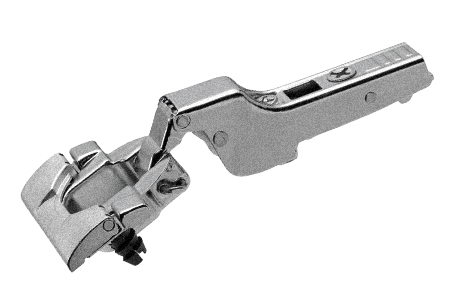
If you have been searching through European hinges, then you might’ve heard of “full crank” or insert hinges among the different types of cabinet hinges.
This hardware gets its name from the bend in its arm, which mainly serves to have the door be inset. So, the entire outer edge of the frame will sit flush and be exposed fully.
This hinge type is quite common, and you can find them on both traditional wood furniture and modern glass cupboards.
The diameter of the cup hole ranges from 26 mm to 40mm depending on the size of your door, so you would need to purchase the accompanying hardware accordingly.
If you are not a big fan of door slamming, many brands offer soft-close features with full crank hinges.
Half Crank Hinges
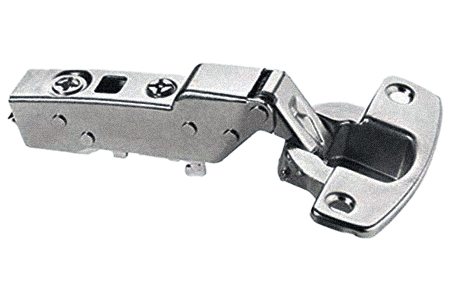
Similar to a full crank hinge, this joint also has an arm, but it is slightly less bent than the other.
It has a similar mechanism, but instead of allowing the door to sit completely flush, half crank hinges cause the edge of the door to cover half the side panel only.
The cup holes within the mount come in three standard diameters in these types of cabinet hinges, which are 26mm, 35mm, 40mm. Make sure you use the right types of drill bits and the right size during installation.
You must also cater to the carcass thickness, which comes in a couple of different sizes as well. To attach this hinge and get the best stability, you need to screw into the edge of the frame to have it cover 2-3 sides of it.
You also get a lot of range on the opening angle, which ranges from 90 to 170 degrees.
Full Overlay Hinges
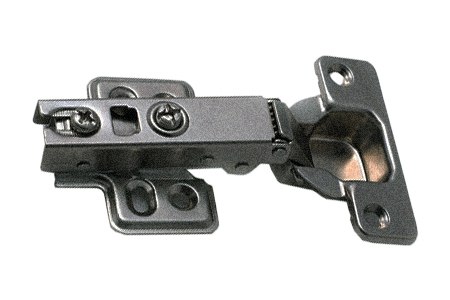
For full overlay door types, you need full overlay hinges. These European hinges have a completely straight arm, unlike the first two.
Since the offset is greater and it allows the door to hide the entire cabinet it is attached to; it is an extremely popular choice in kitchen cabinetry for people who want a seamless look. They can even be used in kitchen cabinet alternatives to achieve the classy look.
Three little screws in it are adjustable and give you a range of motion, varying from 95 to 170 degrees.
Surface Mount Hinges
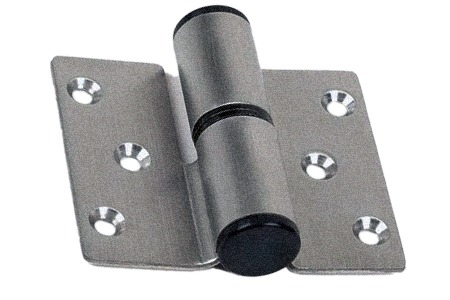
Surface mount hinges are also called frameless hinges because you do not need to install mortise or drill holes. If you choose to, make sure you use the types of drills where you can lower the torque and set the drill bit really low. This type of hinge has one end secured to the door and the other to the frame.
If you want your hinge hidden, you can mount it on the inside to facilitate ample space for the door to swing out. And if you want it visible, you can attach it outside and even get it in style to complement your interior aesthetic.
Besides, some also have a self-closing feature that prevents loud slamming noises when you close the door. That's always nice for early morning or during midnight snack raids.
However, it is to be noted that surface-mounted hinges leave a small gap between the door and the frame, which can cause dust particles to enter your cabinets. All you need is dust on your fancy types of wine glasses when your company has come over.
Butt Hinges
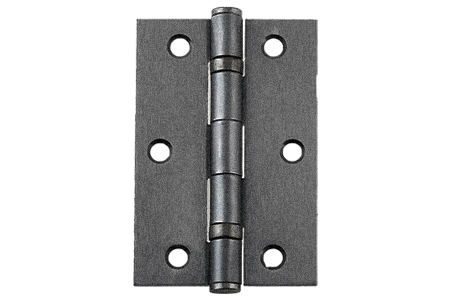
Apart from the two mounting plates that you would expect with almost all cabinet hinges, a butt hinge comes with a barrel as well. Both the sides spread out, and there is a central pin or ball joint, which allows the door to have a substantial free-range motion.
Butt hinges have been around for a while and are still used in traditional woodwork. They have a classic outlook and are a dependable and straightforward option for all projects.
But since the barrel can be viewed from outside, you need to spend a little time selecting a finish to balance the look with these types of cabinet hinges.
Butt hinges with a mortise can sometimes leave a gap, but you can choose the no-mortise option, which minimizes the gap by folding within themselves. This also causes the hinge’s thickness to be reduced.
Flush Hinges
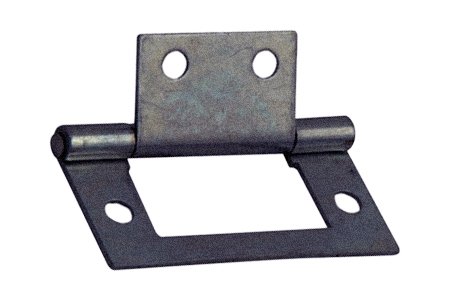
A lot of people often confuse flush hinges with butt hinges because they have a similar profile. But a flush hinge is slightly slimmer and is a better option if you want a no-mortise look.
The mechanism of how a flush hinge works are pretty easy to understand. The smaller part fits into, the larger section when you shut the door; it looks like one whole block. Since they take up less space, they are perfect for complete flush doors.
However, just like butt hinges, you need to consider the finishing of flush hinges too.
Semi-Concealed Hinges
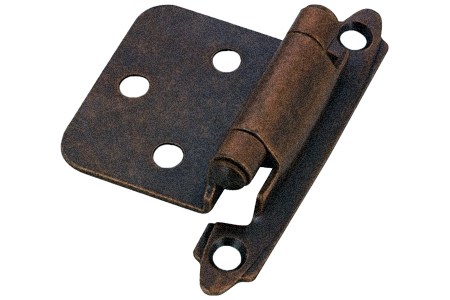
Just like the name suggests, a semi-concealed hinge is not entirely hidden away and can be viewed partly from the outside with a shut door.
The visible part is called the frame wing, while the hidden part is called the door wing, which conceals the primary mechanism of the hinge.
While semi-concealed cabinet door hinge types wrap around a door like many other hinges, it also comes with added features.
They offer almost the same benefits as most modern European hinges and may also provide a self-closing option.
These hinges are easy to install due to the adjustable slotted holes. The self-closing models even come without a door catch to help make the installation process much easier.
Wrap Around Hinges
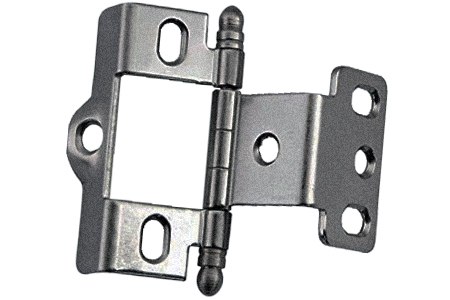
As you might have already guessed, one of this hinge’s faces is fixed to the back of the door while the other wraps around the exterior frame first before going back inside. The wrap looks an “L” shape which saves you so much time and energy during the installation process.
If you want a semi-concealed types of door hinges but are worried about not having substantial support, you can opt for a wrap-around hinge instead.
It looks just a semi-concealed hinge at first, but upon closer inspection, you’ll find that it has either a partial or complete extra wrap within the interior frame.
Pivot Hinges
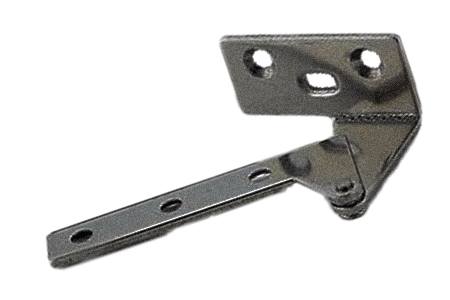
Pivot hinges are often overlooked because they are not used for major cabinets, such as your kitchen or closet. However, you’ll find that they’re highly convenient in unconventional spaces, like in home-theatres and lower cabinets.
They completely disappear when you close the door and are, in fact, one of the best hinge options if you are going for that seamless look. To install, you would need to attach the faces on the upper and lower part of your door and frame.
Barrel Hinges
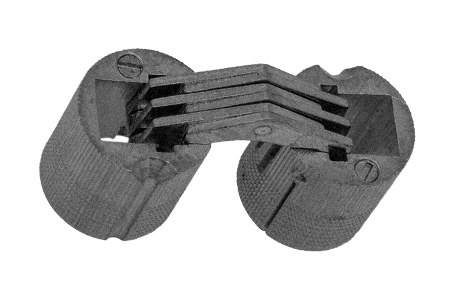
Barrel Hinges are not suitable for vertical or heavy-duty applications. But if you are looking for something to use in small cabinets or boxes, this is a good option. They remain hidden away and will not alter the look of your precious cabinet in any way.
But it does a perfect job in only assisting to open and close the lid of your box. They are typically made of solid brass with brass links and can give you a range of motion to a full 180 degrees.
Strap Hinges
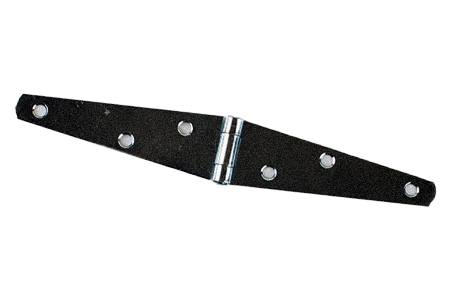
Strap hinges are placed on the outside. They vary in length to fit the size and weight of your doors. Their long, narrow leaves provide extra stability, which allows them to have versatile uses. Due to their heavyweight application, they are most often used in outdoor gates.
Invisible Hinges
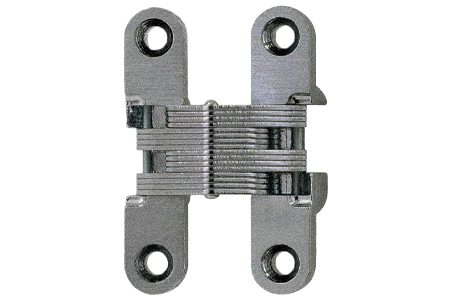
Invisible hinges are not the same thing as concealed types of cabinet hinges despite the similarities in name. Of course they're still visible if you look for them but they're very small and attach to parts of the cabinet doors that shouldn't be seen from a normal angle.
Offset Hinges
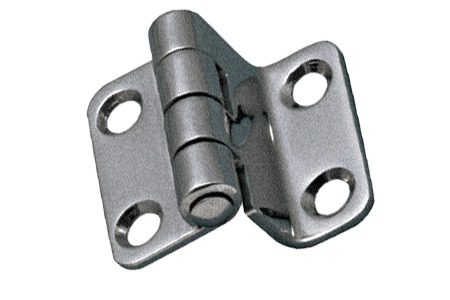
Offset hinges are designed for the specific purpose of making it possible to attach cabinet doors to their frames when the doors don't seat all the way against the frame for whatever reason. The main cause is if the cabinet doors are so thick that they'll rub against the frame when opening.
These hinges are decorative because they attach on the outside of the door and cabinet frame so they don't have to take up any extra room in an already wide situation. When collapsed, the two sides of these hinges will not meet and lay flush with each other.
Face Frame Hinges
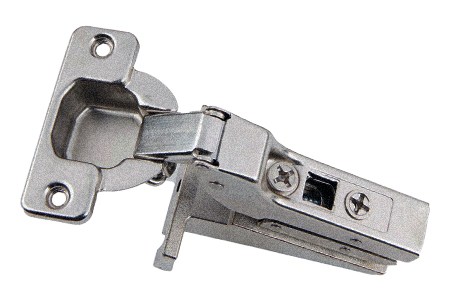
For newer and modern cabinets you'll find face frame hinges. They're designed to be able to wrap their way around a small frame that cabinet makers are installing around the openings.
Many times, these face frame hinges are recessed into the cabinet frame and door, but not always. But in either scenarios they're typically not that visible, and if you do see them you tend to marvel at how they seem technologically advanced.
Half Overlay Hinges
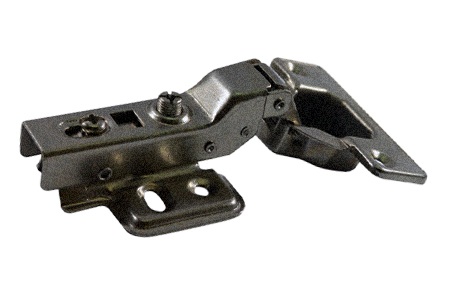
Very similar to face frame hinges, half overlay hinges are types of cabinet hinges that allow half overlay cabinets to have two swinging doors that meet in the middle of the frame. This meeting place is where the hinges are located.
The cabinet doors either butt against a small partition or there may even be a full wall between the two halves of the cabinet.
Since they meet and nearly touch each other, you need special hinges that are small enough to attach to the partition but built in a way that the doors won't hit each other when opened.
Inset Hinges
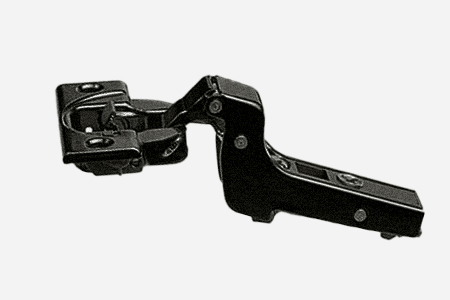
Inset hinges are interesting in that the half of them that attaches to the cabinet door frame will be decorative and mounted on the outside of the frame, while the part that attaches to the door is only visible on the inside of the door and not seen when the door is shut.
You'll have all kinds of choices in cabinet hinge styles to match your tastes and current decor. Sizes, shapes, and colors are just some of the things you can choose when dealing with inset hinges.
Types of Cabinet Hinges for Every Project
And there you have it! We hope that you can finally put all your cabinet door-hanging dilemmas to rest with our list of the cabinet hinges types you can use.
Depending on the size and look you are going for, we’re sure you can find the right types of cabinet hinges that are right up your alley.



